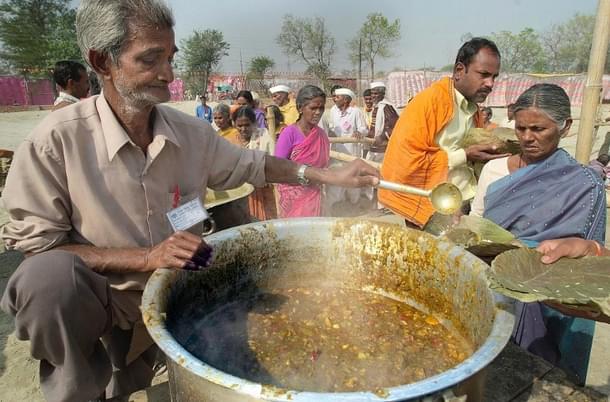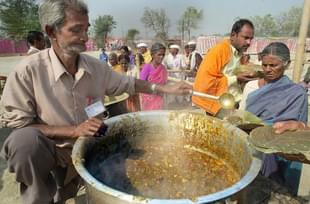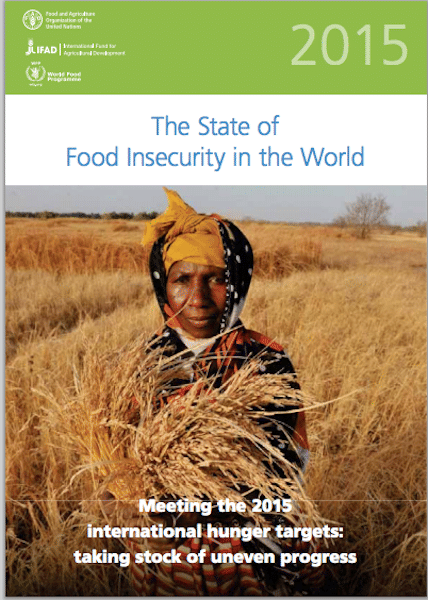Economy
Tackle Food Insecurity Through Evidence-Based Solutions
Seetha
May 29, 2015, 12:30 PM | Updated Feb 24, 2016, 04:36 PM IST
Save & read from anywhere!
Bookmark stories for easy access on any device or the Swarajya app.


Has provision of subsidies improved the status of the under-nourished? If not, what changes have they really caused?
There is a lot of lament – and rightly so – over the State of Food Insecurity in the World 2015 report. The report says India is home to 194.6 million undernourished people – 15.2 per cent of total population – and that it has missed the targets of both the Millennium Development Goals (MDG) and the World Food Summit (WFS) target. Both talked of halving the proportion/number of undernourished people by 2015. The WFS target was set in 1996 and the MDG in 2000.

This is certainly not something for India to be proud about – it still has the second highest estimated number of undernourished people in the world and some of the smaller South Asian countries have done better. But this should not lead to breast-beating about India’s nutrition situation worsening or that the Indian state being an uncaring one.
Nowhere does the report say that India has not improved its position on malnutrition indicators or that it has not taken steps to address the problem. Referring to South Asia (India pulls down the region’s achievements), it says that “progress has accelerated over the last decade”. The report says China and India alone account for 81 per cent of the total reduction of the number of undernourished people in the developing regions between 1990-92 and 2014-16. China, of course, has the larger share, accounting for almost two-thirds of the reduction.
The National Sample Survey Organisation’s Nutritional Intake in India, 2011-12 clearly shows that both calorie and protein consumption has gone up between 2009-10 and 2011-12, reversing a declining trend since 1993-94. See this article for more details. So clearly things are improving in India, though perhaps not at a fast-enough pace.
On the policy action front, dealing specifically with India, the report notes that the food subsidy programme has ensured that higher global food prices “have not been entirely transmitted into domestic prices”. That line will now be used to show that the National Food Security Act (NFSA) is neither misplaced nor flawed in its design, and that, in fact, its implementation needs to be pushed by the central government (the centre’s role, in a way, ended with the passing of the Act, the ball is now in the court of the states).
But this is a faulty extrapolation. The design of the NFSA does not take in to account the reality of how calories are consumed. The NSSO survey clearly shows that the share of cereals in calorie intake has been declining – from 71 per cent in 1993-94 to 61 per cent in 2011-12 in rural areas and from 58 per cent to 51 per cent in urban areas. Other non-cereal food groups (whose share in consumption is rising) are providing people with calories. True, in the case of the poorer households it is cereals which are the main provider of calories, but even here the share is declining over time. What is more, there are huge variations among states in cereal consumption.
But the NFSA is focussed largely on cereals. How, then, is it going to help tackle the problem of under-nutrition?
There are academic studies that question the link between food subsidy programmes and nutrition outcomes. Neeraj Kaushal of Columbia University and National Bureau of Economic Research led a survey on how consumer price subsidies affect nutrition, looking specifically at the targeted public distribution scheme (TPDS) and its effect on consumption patterns. The study was done for six states where the PDS has been doing well – Himachal Pradesh, Jammu and Kashmir, Madhya Pradesh, Maharashtra, Uttaranchal, and Chattisgarh. It also looked at data on seven states where the PDS was languishing – Assam, Bihar, Jharkhand, Punjab, Haryana, Gujarat, and West Bengal.
So all that the subsidy did was to increase consumption of cereals and sugar from earlier levels but reduce the consumption of cheaper and unsubsidized coarse grains. The survey also found that households allocate some of the increase in income from the food price subsidy to expenditures on non-food items.
So, yes, it is important to tackle the issue of under-nutrition on a war-footing. An economy cannot touch double-digit growth with an under-nourished population. But let the solutions be based on hard evidence and ground realities.
Seetha is a senior journalist and author





